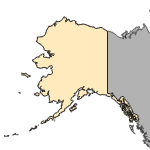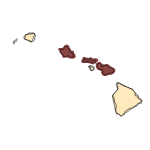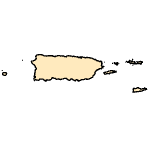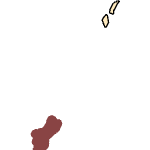Pila scutata
(an applesnail)
Mollusks-Gastropods
Exotic |
|
Common name: an applesnail
Synonyms and Other Names: Pila conica
Native Range: Indonesia, Malaysia, Myanmar, Philippines, Cambodia, Laos, Vietnam, and Singapore (Low et al. 2013).



|

Alaska |

Hawaii |

Puerto Rico &
Virgin Islands |

Guam Saipan |
Hydrologic Unit Codes (HUCs) Explained
Interactive maps: Point Distribution Maps
Nonindigenous Occurrences:
Table 1. States with nonindigenous occurrences, the earliest and latest observations in each state, and the tally and names of HUCs with observations†. Names and dates are hyperlinked to their relevant specimen records. The list of references for all nonindigenous occurrences of Pila scutata are found here.
Table last updated 2/2/2025
† Populations may not be currently present.
Status: Established on Hawaii (Cowie et al. 2017) and Guam (Smith 1992, 2003).
References: (click for full references)
Cowie, R.H., K.A. Hayes, E.E. Strong, and S.C. Thiengo. 2017. Non-native apple snails: systematics, distribution, invasion history and reasons for introduction. Pages 3-32 in Joshi, R.C., Cowie, R.H., and Sebastian, L.S, eds. Biology and management of invasive apple snails. Philippine Rice Research Institute (PhilRice), Maligaya. Science City of Muñoz, Nueva Ecija 3119, 406 pp.
Low, M.E.Y., S.K. Tan, and T.H. Ng. 2013. Pila conica (Wood, 1828), or Pila scutata (Mousson, 1848)? The correct name for the native apple snail of Singapore (Gastropoda: Ampullariidae). Nature in Singapore 6:55-60.
Smith, B. D. 1992. Introduction and dispersal of apple snails (Ampullariidae) on Guam. Pacific Science Association Information Bulletin 44(1/2): 12–14.
Smith, B. D., 2003. Prosobranch gastropods of Guam. Micronesica 35–36: 244–270.
Author:
Benson, A.J.
Revision Date: 7/3/2019
Citation Information:
Benson, A.J., 2025, Pila scutata (Mousson, 1848): U.S. Geological Survey, Nonindigenous Aquatic Species Database, Gainesville, FL, https://nas.er.usgs.gov/queries/FactSheet.aspx?SpeciesID=2258, Revision Date: 7/3/2019, Access Date: 2/2/2025
This information is preliminary or provisional and is subject to revision. It is being provided to meet the need for timely best science. The information has not received final approval by the U.S. Geological Survey (USGS) and is provided on the condition that neither the USGS nor the U.S. Government shall be held liable for any damages resulting from the authorized or unauthorized use of the information.